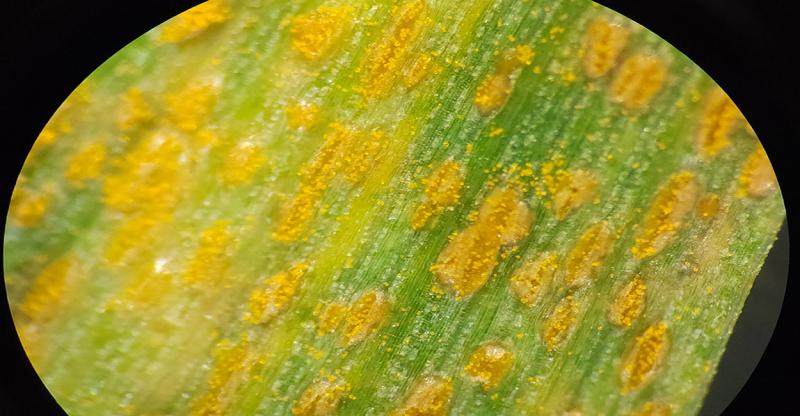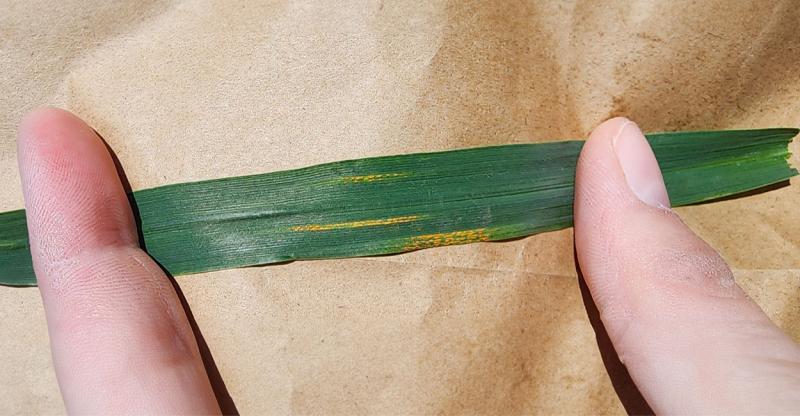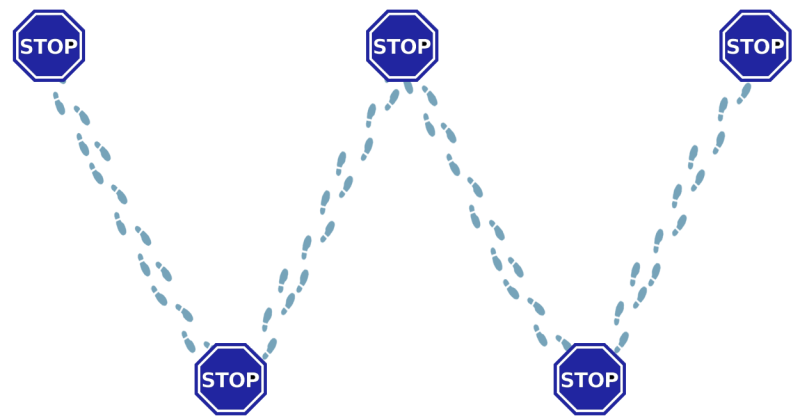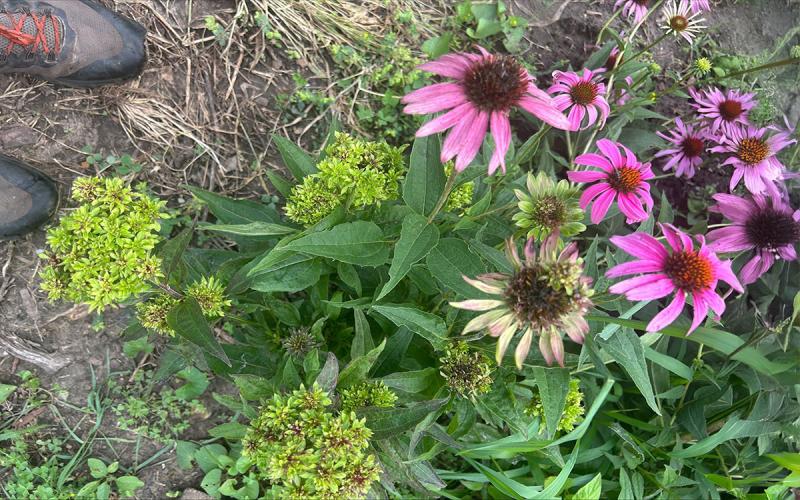
Scouting wheat fields continues to be an important pest management strategy. Stripe rust has been found in winter wheat in Brookings County at low incidence and severity (a few scattered plants with one or two leaves), while the wheat leaves with stripe rust have heavy pustules (Figure 1).
The presence of stripe rust at this time indicates that there is potential inoculum source for this rust in our area. Stripe rust has already been reported in Nebraska and other southern states.
It is possible that the stripe rust observed in this field overwintered there or it could possible be from spores blown in from southern states.
Disease Overview

Symptoms
Stripe rust forms yellow-orange linear pustules (like a stripe) on the leaves (Figure 2).
Development
Cooler temperatures (45 to 59 degrees Fahrenheit) and wet conditions (at least 8 hours of leaf wetness) favor stripe rust (Puccinia striitiformis f. sp. tritici) infection. Warmer conditions (>75 degrees Fahrenheit) curtail progress of this rust, but infection can still take place under cool, night temperatures.
Identification
Correctly identifying this disease (or any other fungal, bacterial, or viral disease) is extremely important, as it aids in management decisions. Please send plant disease questions to SDSU Extension Plant Pathology Specialist Dr. Madalyn Shires or SDSU Extension Plant Pathology Field Specialist Connie Strunk.
Samples can also be sent to the SDSU Plant Diagnostic Clinic. The clinic’s mailing address is 140 Raven, Box 2100A 1451 Stadium Road Brookings, SD 57007-1090 and the physical address for sample drop off is Berg Ag Hall Room 001. For more information, visit the SDSU Plant Diagnostic Clinic website.
Management

Scouting
Scouting is encouraged to assess the presence of stripe rust and to plan a fungicide application, depending on the field incidence level and weather conditions. Normally, stripe rust is detected in winter wheat in South Dakota towards the end of May/early June.
Scouting is crucial to determine the level of disease and whether a there is a need for a fungicide. Scout each field by walking in a “W” pattern, making a stop at each turn. Observe the lower leaves of at least 10 plants (Figure 3) at each turn. Begin scouting about 15 feet from the field edges. If stripe rust is found at 2 out of 5 stops, a fungicide may be necessary. If stripe rust is present, it can spread very quickly in fields under the right environmental conditions.
Fungicide Selection
If the planted cultivar is rated as susceptible or moderately susceptible to stripe rust, an early fungicide may be needed (ratings of cultivars can be found in the latest South Dakota Winter Wheat and Spring Wheat variety trials.
Most of the marketed fungicides on wheat are rated as excellent or very good on stripe rust (see the Fungicide Efficacy for Control of Wheat Diseases publication developed by the North Central Regional Committee on Management of Small Grain Diseases for additional information).
If the decision to apply a fungicide is made, consult the latest South Dakota Wheat Pest Management Guide for labeled fungicides in South Dakota.

